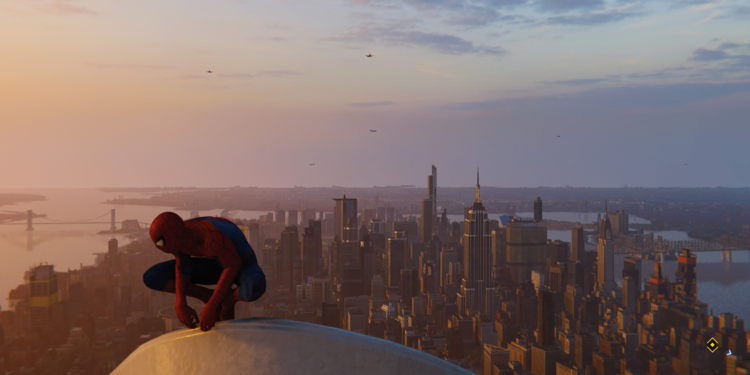Game Review: Marvel’s Spider-Man
Sony announced Marvel’s Spider-Man, a title developed by Insomniac Games, on June 13. Insomniac has worked with Sony before on some classic PlayStation titles such as the Ratchet and Clank series, the Spyro Trilogy, and the Resistance series. The involvement of such a reliable developer along with the fantastic look of the reveal trailer threw Sony fans into a frenzy, and two years later, the game was released. I bought the game a few days after it came out on September 7, and it is safe to say the game is as good as it looks.
Spider-Man is set in, as per usual, Manhattan. Insomniac did an unbelievable job in creating the Big Apple (other than the fact that a large chunk of land above Harlem was chopped off), which is not an easy job to pull off. Fan tests have shown the map to be almost identical to real life, with most buildings exactly where they are in reality. A few buildings were moved around/changed due to licensing or being replaced for buildings necessary for the universe, such as Avengers Tower, Trump Tower, real-life company stores (Apple, Microsoft, etc.), and the New York Sanctum (headquarters of Doctor Strange). Even with these tweaks, the city looks beautiful and the game does a good job capturing its scale. The sidewalks are crowded with people of all different walks of life, all looking like they have somewhere to go and something to do.
The story is nothing incredibly special (I won’t spoil anything), with only a few missions at the beginning of the game lacking in real content, just meant for fluff to add to game time. Throughout the city, you can find various side missions, where Spider-Man helps out some average New Yorkers. There are also a few common side objectives which pop up at various times and places in the city. The characters are mostly well rounded, with the usual cast of Aunt May, Mary Jane, and other common faces from the Marvel universe making appearances. Peter Parker is at the age of 23 in this game, which is rather unique because it stars a more experienced Spider-Man instead of a high school sophomore. A very strong part of the game, and one that I really enjoyed, was the suit customization. There are 28 different suits that can be unlocked in the game by finishing side quests, stopping crimes, acquiring data in “research centers,” and infiltrating bases filled to the brim with baddies. The suits are mostly nods to comic book iterations of Spider-Man; however, some were made specifically for the game.
A typical fight for Spider-Man could consist of throwing some super-powered punches, shooting a few webs, and tossing a trash can at someone. While the combat system can get somewhat repetitive, players have access to various upgradable gadgets, special moves, and environmental attacks that help shake things up. The four factions of enemies in the game each have their own soldier types and moves to counter Spider-Man. Most of the game’s seven boss fights consist of roughly the same attack cycle, each lasting about 5-15 minutes.
One of the best, if not the best, aspect of the game is the web swinging. Swinging around Manhattan may be one of the best transportation systems any game has to offer, and Marvel’s Spider-Man has no problem perfecting that mechanic. There are several tools inside the web swinging that can be used to get around quicker and in style, including mid air tricks. An interesting detail to note is the realistic webbing, meaning the webs used to swing actually do need to attach to some sort of structure.
While Marvel’s Spider-Man has many great features, the game also has its fair share of flaws. As I stated before, the combat can get somewhat repetitive and almost boring at times. One game mode, “Bases,” can get especially tedious, with enemies simply coming at you one after another in waves. Another big problem with the game were certain parts of the story where you play as Mary Jane or Miles Davis. These missions are all pretty much the same and occur way more than they should. They consist of hiding behind a box, waiting for a guard to turn his back, and then running to the next box and repeating. While the MJ and Miles missions are good at storytelling, they lack fun and creativity.
Another problem I personally had with the game was the fact that, as I said before, all seven of the boss fights are nearly the same exact attack cycle, which is to web shoot or throw something and then punch. Sure, it’s fun to look at and to play the first few times, but these fights become almost predictable after the third or fourth one. There were also a good amount of bugs in the world, but none (that I experienced at least) were game-breaking problems. These flaws may be occasionally bothersome while swinging through Manhattan, but the good features certainly outnumbers the bad ones in Marvel’s Spider-Man.
It’s no surprise that a game with so much going for it came out as great as it did. I rate Marvel’s Spider-Man 8/10.
























